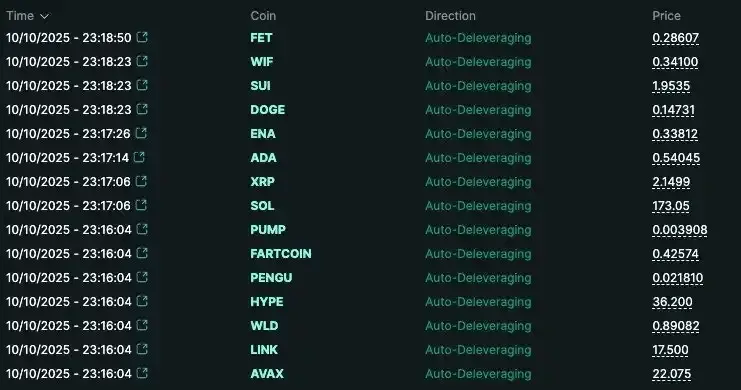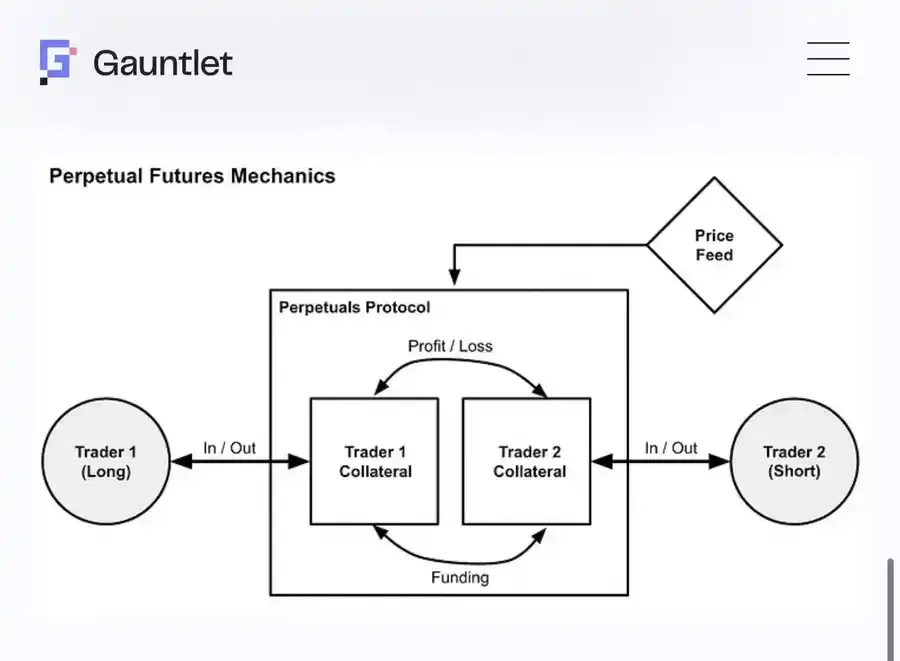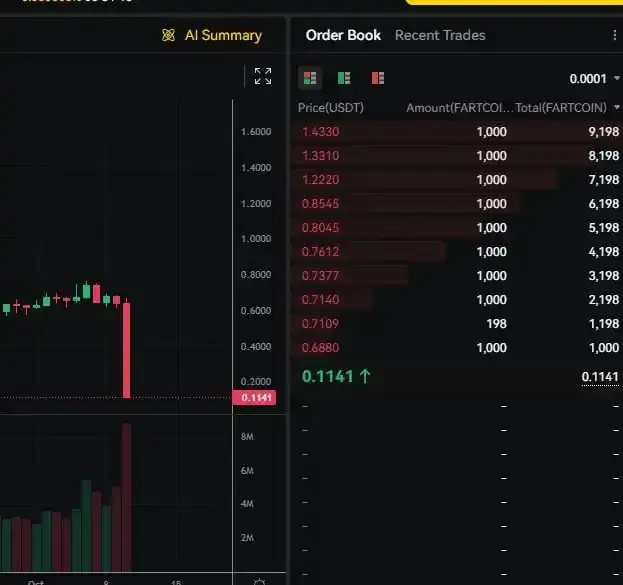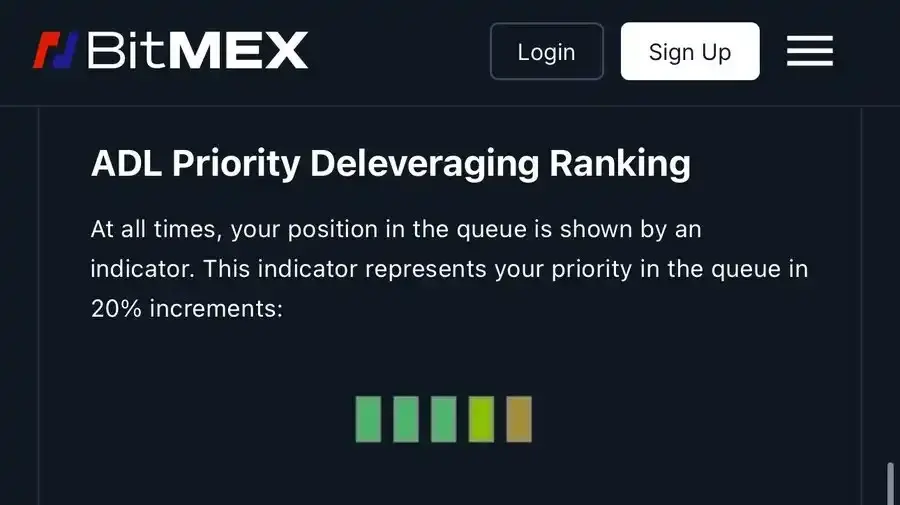Why does your position suddenly get liquidated during extreme market conditions?
A cash game without BTC, with the automatic deleveraging mechanism activated when long and short positions become imbalanced.
Original author: Doug Colkitt, founder of ambient
Original translation: Deep Tide TechFlow
Given that many people woke up to find their perpetual contract (perps) positions liquidated and are wondering what "Auto-Deleveraging" (ADL) means, here is a concise beginner's guide for everyone.
What is ADL? How does it work? Why does it exist?

First, we need to understand from a more macro perspective what a perpetual contract market is and what its function is. Taking the BTC perpetual contract market as an example, interestingly, there is actually no real BTC in this system. There is only a large pile of idle cash in the system.
The perpetual contract market (or any derivatives market in a broader sense) essentially distributes this pile of cash among participants. It operates through a set of rules designed to create synthetic instruments similar to BTC in a system where there is no actual BTC.
The most important rule is: there are longs and shorts in the market, and the positions of longs and shorts must be perfectly balanced, otherwise the system cannot function properly. In addition, both longs and shorts need to put cash (as margin) into this pool of funds.
This pool of funds is redistributed among participants as the price of BTC rises and falls.

In this process, when the price of BTC fluctuates too much, some participants will lose all their funds. At this point, they are forced out ("liquidated").
Remember, longs can only profit when shorts have funds to lose (and vice versa). Therefore, when funds run out, you can no longer participate in the market.
Moreover, every short must be perfectly matched with a solvent long. If a long in the system has no more funds to lose, by definition, this means the corresponding short on the other side also has no funds left to profit from (and vice versa).
Therefore, if a long is liquidated, one of the following two things must happen in the system:
A) A new long position enters the system, bringing new funds to replenish the pool;
B) The corresponding short position is closed, bringing the system back into balance.
Ideally, all of this can be achieved through normal market mechanisms. As long as a willing buyer can be found at a fair market price, there is no need to force anyone to take action. In normal liquidation operations, this process is usually completed through the regular order book of the perpetual contract market.
In a healthy and liquid perpetual contract market, this approach is perfectly fine. The liquidated long position is sold into the order book, the best bid in the order book fills this position, becomes the new long in the system, and brings new funds to replenish the pool. Everyone is satisfied.
But sometimes there is insufficient liquidity in the order book, or at least not enough liquidity to complete the transaction without causing the original position to lose more than its remaining funds.
This becomes a problem because it means there is not enough cash in the pool to meet the needs of other participants.

Usually, the next "rescue mechanism" is the intervention of an "insurance vault" or "insurance fund." The insurance vault is a special pool of funds supported by the exchange, which steps in and absorbs the liquidated counterparty during extreme liquidity events.
In the long run, the insurance vault is often quite profitable, as it has the opportunity to buy at a deep discount and sell at high prices during dramatic price swings. For example, Hyperliquid's insurance vault earned about 40 millions USD in just one hour tonight.

But the insurance vault is not magic; it is just another participant in the entire system. Like everyone else, it needs to inject funds into the pool, follow the same rules, and the risk it can bear and the capital it can contribute are also limited.
Therefore, the system must have a final "rescue step."
This is what we call "Auto-Deleveraging" (ADL). This is the last resort and is (hopefully) a rarely occurring situation, as it involves forcibly removing someone from their position rather than paying them out. This situation happens so infrequently that even experienced perpetual contract traders often barely notice its existence.
You can think of it as an overbooked flight. First, the airline uses market mechanisms to resolve the overbooking, such as continuously increasing compensation to entice passengers to switch to a later flight. But if no one accepts in the end, some passengers must be forcibly removed from the plane.

If the long funds are exhausted and no one is willing to step in and take their place, then the system has no choice but to force at least some shorts to exit and close their positions. Different exchanges have very different processes for selecting which positions to close and at what price.
Usually, the ADL system selects the profitable positions to be closed through a ranking system, based on criteria such as: 1) most profitable; 2) leverage multiple; 3) position size. In other words, the largest and most profitable "whales" are the first to be sent home.

Naturally, people are dissatisfied with ADL because it seems unfair. You are at the peak of your profits, yet you are forcibly removed from your position. But to some extent, its existence is necessary. No matter how good an exchange is, it cannot guarantee there will always be an unlimited number of losers on the other side to fill the pool.
You can think of it as a winning streak in Texas Hold'em. You enter the casino and beat everyone at the table; then you move to the next table and beat everyone again; then move to the next table. Eventually, everyone else in the casino runs out of chips. That is the essence of ADL.

The beauty of perpetual contract markets is that they are always a zero-sum game, so the entire system as a whole will never be insolvent.
There isn't even any real BTC depreciating here. There is only a large pile of boring cash. Just like the laws of thermodynamics, in the entire system, value is neither created nor destroyed.
ADL is a bit like the ending of the movie "The Truman Show." Perpetual contract markets build a very sophisticated simulation, as if it is a real world linked to the spot market.
But in the end, it's all virtual. Most of the time, we don't need to think about this... but sometimes, we touch the edge of this simulation.

Disclaimer: The content of this article solely reflects the author's opinion and does not represent the platform in any capacity. This article is not intended to serve as a reference for making investment decisions.
You may also like

Critical Moment for the Market! Gold Surpasses $4,060, Global Assets Rebound

Crypto ETFs enter an acceleration phase, what’s next for the market?

Understanding the 2 billion liquidation: Market risks have never gone away

